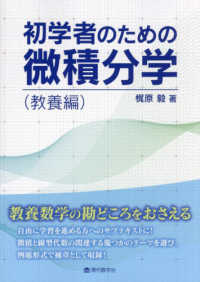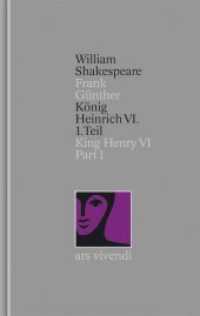- ホーム
- > 洋書
- > 英文書
- > Science / Mathematics
基本説明
大気科学研究における機器計測技術を解説するテキスト。
Full Description
Almost all of the breakthroughs in understanding the atmosphere have been initiated by field observations, using a range of instrumental techniques. Developing or deploying instruments to make further observations demands a thorough understanding of the chemical and spectroscopic principles on which such measurements depend.
Written as an authoritative guide to the techniques of instrumental measurement for the atmospheric scientist, research student or undergraduate, Analytical Techniques for Atmospheric Measurement focuses on the instruments used to make real time measurements of atmospheric gas and aerosol composition. Topics covered include how they work, their strengths and weaknesses for a particular task, the platforms on which they have been deployed and how they are calibrated. It explains the fundamental principles upon which the instrumental techniques are based (ie what property of a molecule can be exploited to enable its detection), what limits instrumental sensitivity and accuracy, and the information that can be gained from their use.
Contents
Preface. Acknowledgements.
Contributors.
1. Field Measurements of Atmospheric Composition (Dwayne E. Heard).
2. Infrared Absorption Spectroscopy (Alan Fried and Dirk Richter).
3. UV-Visible Differential Optical Absorption Spectroscopy (DOAS) (John M.C. Plane and Alfonso Saiz-Lopez).
4. Fluorescence Methods (Ezra C. Wood and Ronald C. Cohen).
5. Mass Spectrometric Methods for Atmospheric Trace Gases (Jonathan Williams).
6. Mass Spectrometric Methods for Aerosol Composition Measurements (Hugh Coe and James D. Allan).
7. Chemical Methods: Chemiluminescence, Chemical Amplification, Electrochemistry, and Derivatization (Andrew J. Weinheimer).
8. Chromatographic Methods (Jacqueline F. Hamilton and Alastair C. Lewis).
9. Measurement of Photolysis Frequencies in the Atmosphere (Andreas Hofzumahaus).
References.
Index.








